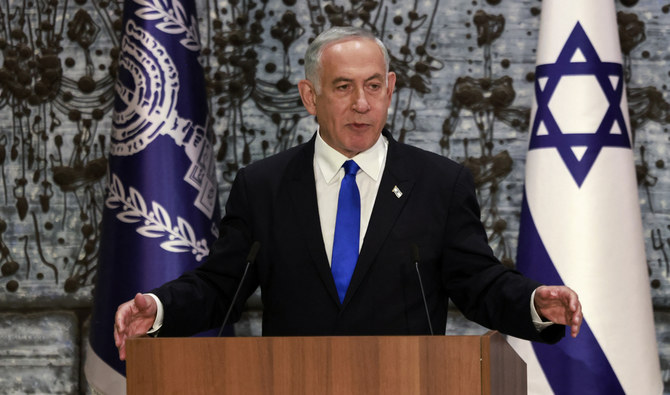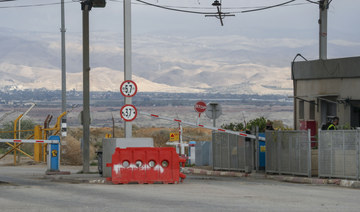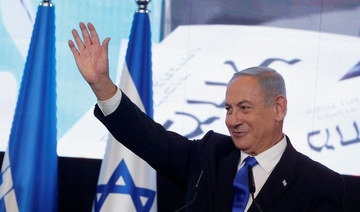RAMALLAH: Benjamin Netanyahu, who secured a mandate on Sunday to form a new government, is likely to stop arming Ukraine and might boost Israel’s relations with Moscow, which were damaged during Yair Lapid’s term as prime minister, analysts say.
Yoni Ben-Menahem, senior rsearcher at the Jerusalem Center for Public Affairs, told Arab News Netanyahu will take a pro-Moscow position and seek to repair Israel’s relations with Russia.
Ben-Menahem indicated that Israel was disappointed with Ukraine because it voted on the side of the Palestinians at the UN last Friday, Nov. 11.
The Israeli Foreign Ministry was expected to summon the Ukrainian ambassador to reprimand him and lodge an official protest against his county’s behaviour and position against Israel at the UN.
Ukraine’s vote on Friday in favor of the Palestinians has only increased Netanyahu’s anger against Kyiv’s position, “so I don’t think he will provide them with the weapons they want,” added the senior analyst.
Ben-Menahem also said that Netanyahu’s statements about helping Ukraine during his election campaign did not mean that he would abide by them, as Israel needs to maintain good relations with Russia, which gave Israel the green light to bomb Iranian sites in Syria.
The analyst said that social media sites in Israel were critical of Ukraine’s position, and were wondering if its vote in support of Palestinians at the UN was “how Ukraine says to Israel, thank you for helping us and hosting Ukrainian refugees in your country.”
Russia has warned Israel several times against supplying Ukraine with weapons amid Kyiv’s insistence that Tel Aviv sell it the Iron Dome air defense system.
On Oct. 17, Dmitry Medvedev, deputy secretary of the Russian Security Council, announced that Israel’s plans to supply Kyiv with weapons were reckless, and stressed that it would destroy all relations between the two countries.
On Oct. 22, Netanyahu, head of the Likud party, said in an interview with USA Today that he would study the possibility of providing Ukraine with weapons if he became the next prime minister, in an apparent contradiction to his previous statements.
Ukrainian President Volodymyr Zelensky has repeatedly demanded Israel provide qualitative weapons, including the Iron Dome system specialized in intercepting missiles.
Israeli regimes headed by Naftali Bennett and Lapid had rejected Zelensky’s request for fear of angering Moscow, which tolerates Israeli Air Force strikes against Iranian military targets inside Syria.
The diplomatic developments came amid claims Israeli-made armored vehicles had been spotted near Kherson in service of the Ukrainian military, amid speculation whether it received them directly from the Jewish state or from a third party.
The images and videos of the armored vehicles were published on the day Ukraine regained control of Kherson.
The Israeli public TV channel KAN, affiliated with the Israel Broadcasting Corporation, displayed videos and image of the Amir anti-mine armored vehicles.
These media claims raise questions over whether Israel would start responding to Ukraine’s request for arms beyond helmets and protective jackets.
The channel published a picture of the vehicles in Kherson and compared to to an Israeli Amir vehicle, showing “a very great similarity,” reports claimed.
The picture of the Amir was published by a social media account that follows weapons used by Kyiv on Twitter, showing what it claimed were Israeli armored vehicles used by Ukrainian forces in Kherson and the surrounding villages.
While the Israeli Ministry of Defense and the private Israeli company that manufactures the Amir has not commented on these reports, it is believed that a European country or company may have purchased the vehicles and delivered them to Ukraine.
The Amir is produced by GAIA Automotive Industries in the Kiryat Tivon area in Haifa, northern Israel.
It is capable of carrying 12 soldiers or evacuating wounded from battlefields, as well as carrying 14 tons of ammunition or other military equipment.
It is based on a Ford F550 chassis, a commercial vehicle, with independent suspension.


























